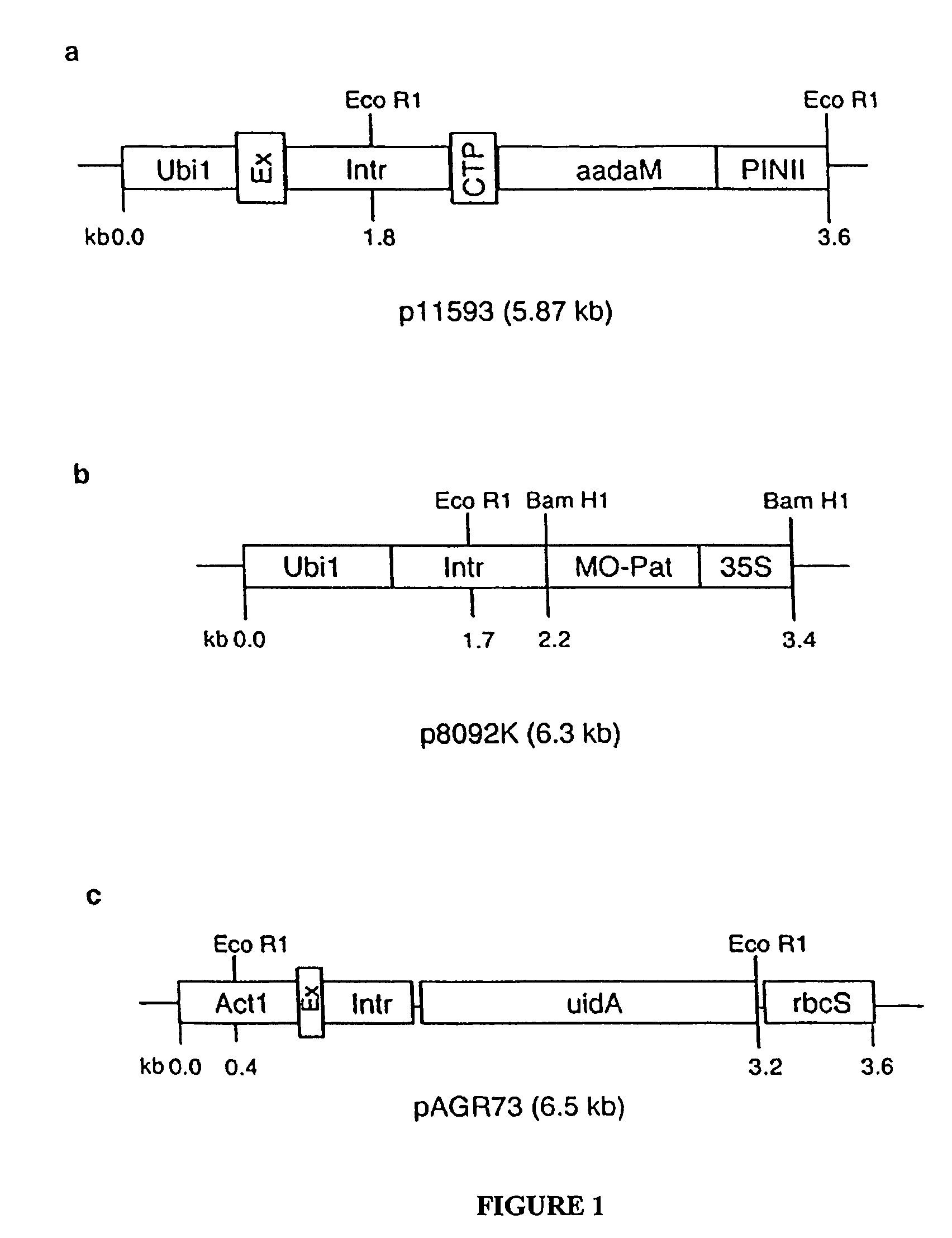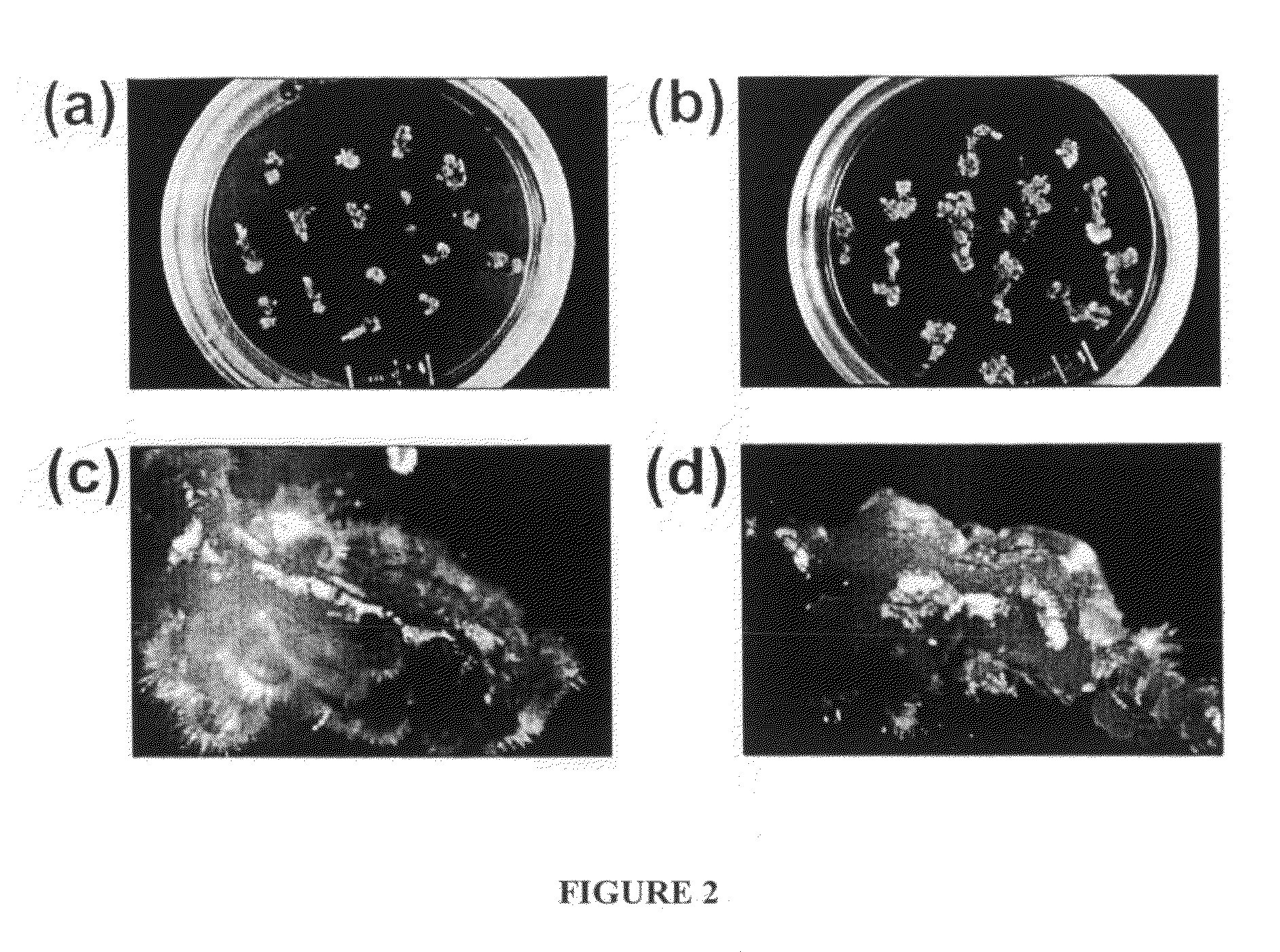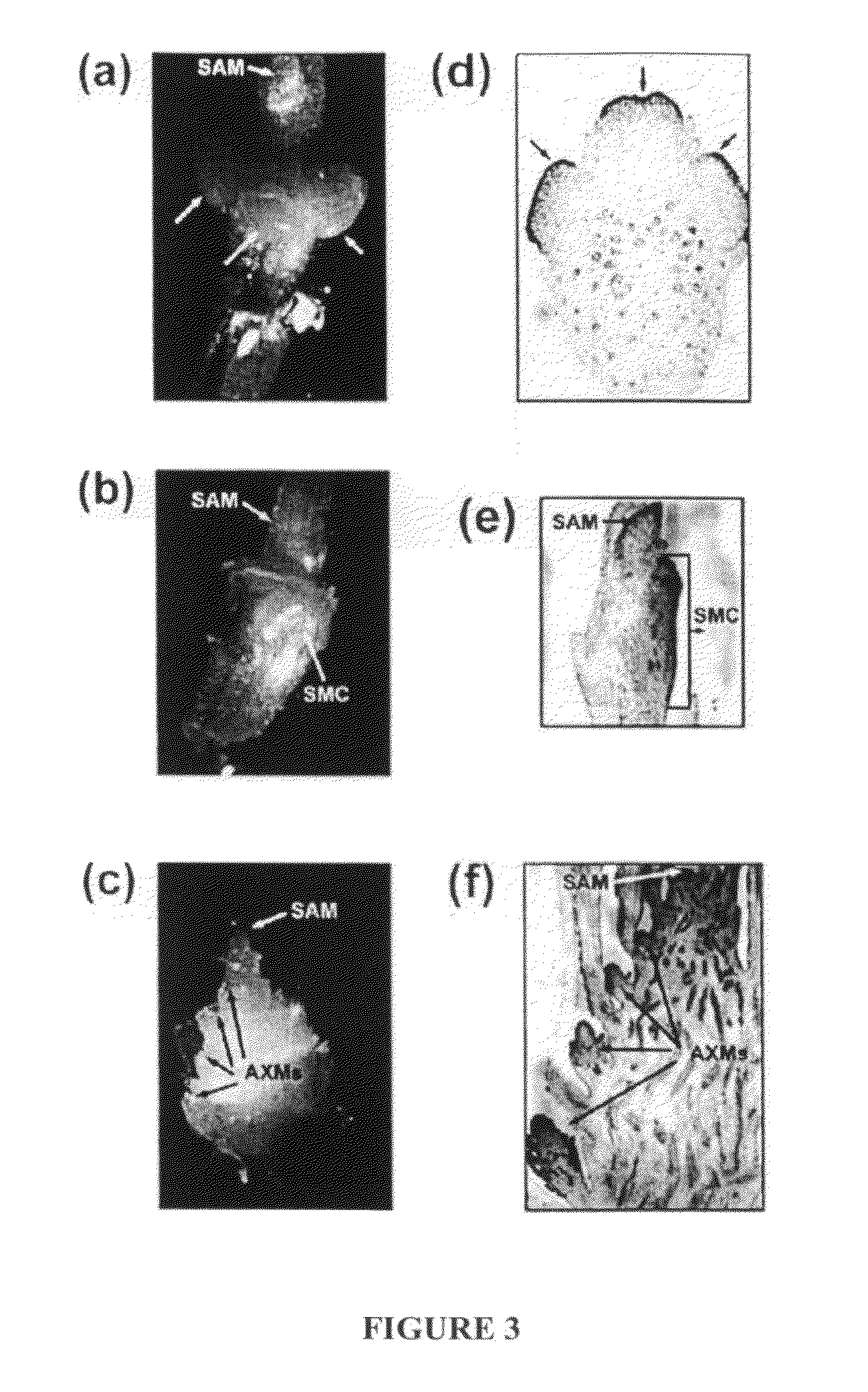Methods and compositions for transformation and regeneration of maize
a technology of in vitro culture and maize, applied in the field of compositions and methods for in vitro culture, transformation, and regeneration of maize, can solve the problems of affecting the growth rate of maize, and less effective with recalcitrants, so as to improve the stability of transgene expression, improve the regeneration frequency, and reduce somaclonal variation
- Summary
- Abstract
- Description
- Claims
- Application Information
AI Technical Summary
Benefits of technology
Problems solved by technology
Method used
Image
Examples
example
Transformation of Maize Elite Inbreds Using In Vitro Shoot Meristematic Cultures Induced from Stem Tissue
[0071]The transformation of model cultivars of maize has been reported (for review, Gordon-Kamm, 1999). The reported methods involve the transformation of immature embryos (IEs) or IE-derived embryogenic callus by particle bombardment, or Agrobacterium-mediated delivery, or the transformation of protoplasts by polyethylene glycol or electroporation. However, it remains difficult to use routinely any of these target tissues to obtain fertile transgenic plants from the elite, commercially important, maize inbred lines (Gordon-Kamm, 1999).
[0072]Recently, two new target tissues, shoot apical meristems, (SAMs) in IEs (Lowe et al., 1995; 1997) and in vitro-multiplied shoot tips (Zhong et al., 1996), were used to produce transgenic maize. Direct bombardment of the SAMs in IEs was employed to produce stable transgenic sectors in T0 plants in elite inbreds of maize. This approach was limi...
PUM
| Property | Measurement | Unit |
|---|---|---|
| concentration | aaaaa | aaaaa |
| concentration | aaaaa | aaaaa |
| concentrations | aaaaa | aaaaa |
Abstract
Description
Claims
Application Information
 Login to View More
Login to View More - R&D
- Intellectual Property
- Life Sciences
- Materials
- Tech Scout
- Unparalleled Data Quality
- Higher Quality Content
- 60% Fewer Hallucinations
Browse by: Latest US Patents, China's latest patents, Technical Efficacy Thesaurus, Application Domain, Technology Topic, Popular Technical Reports.
© 2025 PatSnap. All rights reserved.Legal|Privacy policy|Modern Slavery Act Transparency Statement|Sitemap|About US| Contact US: help@patsnap.com



